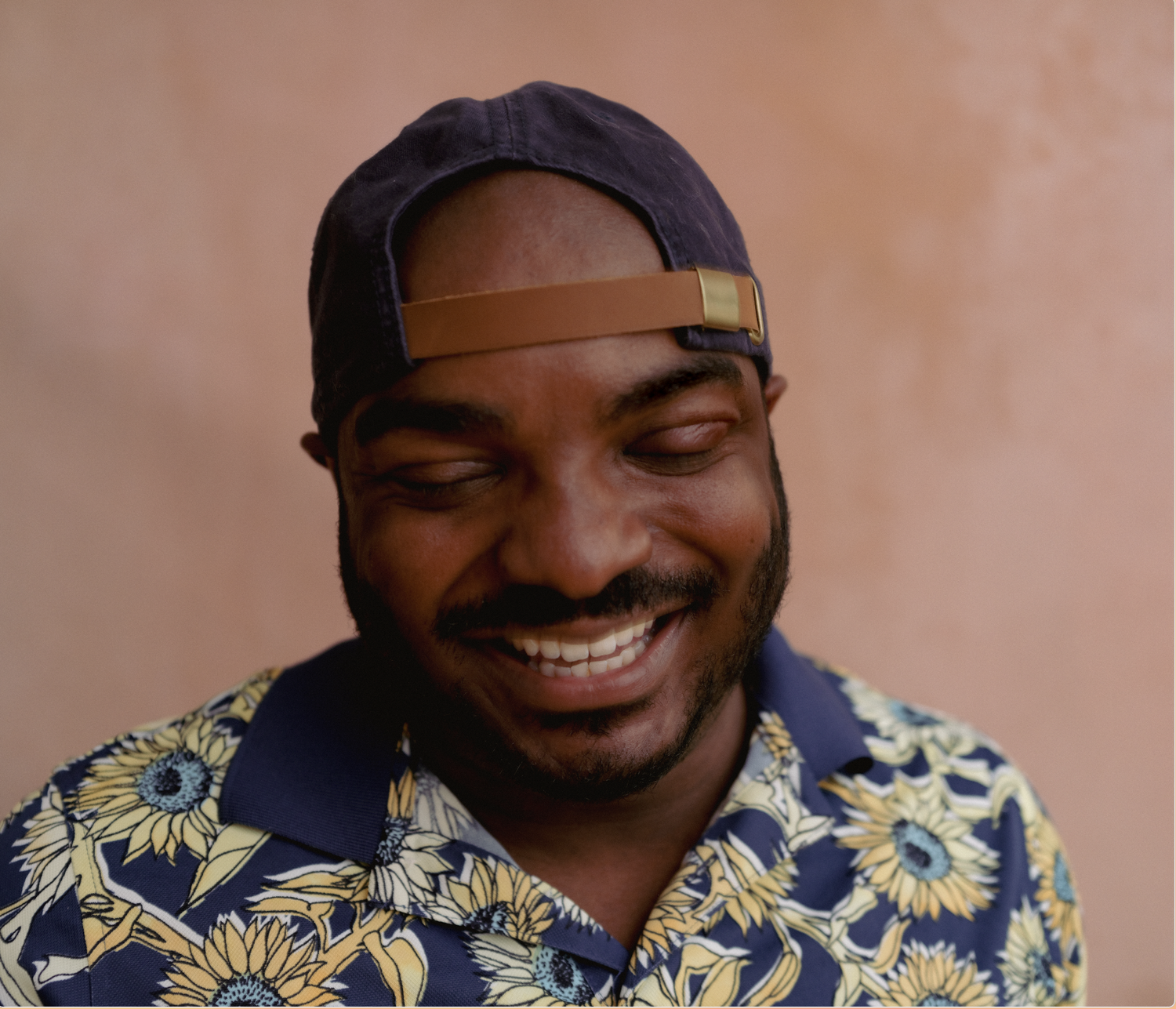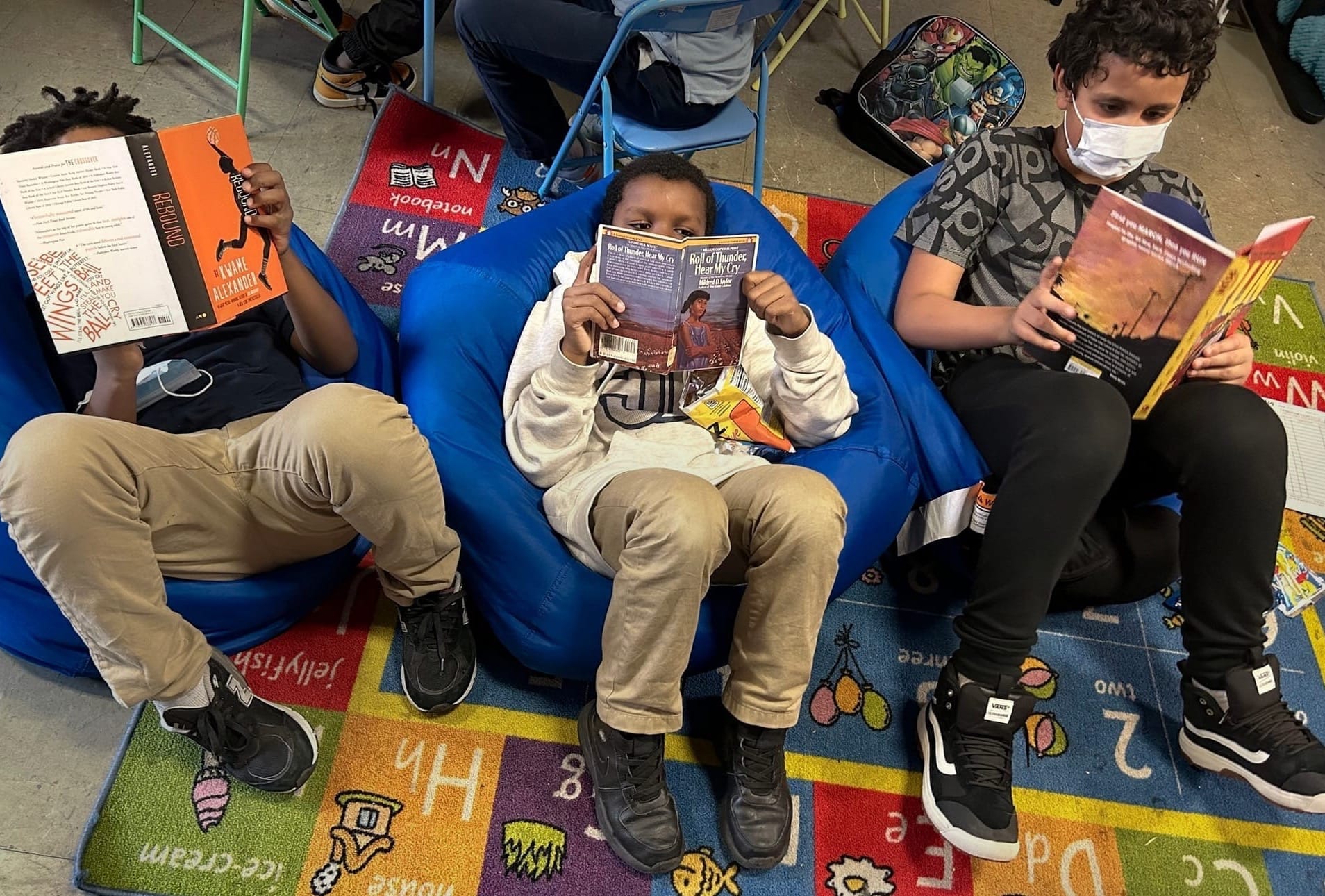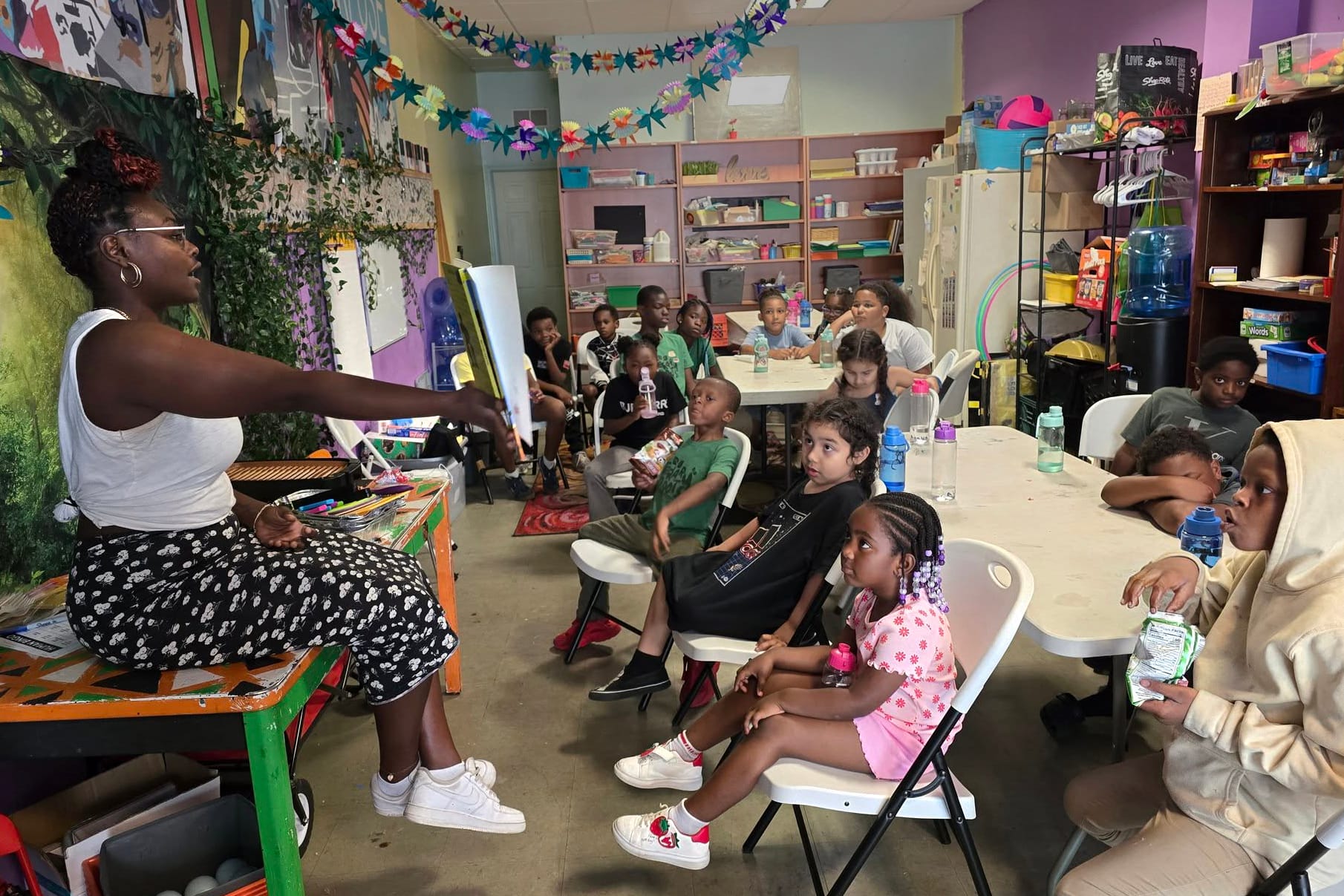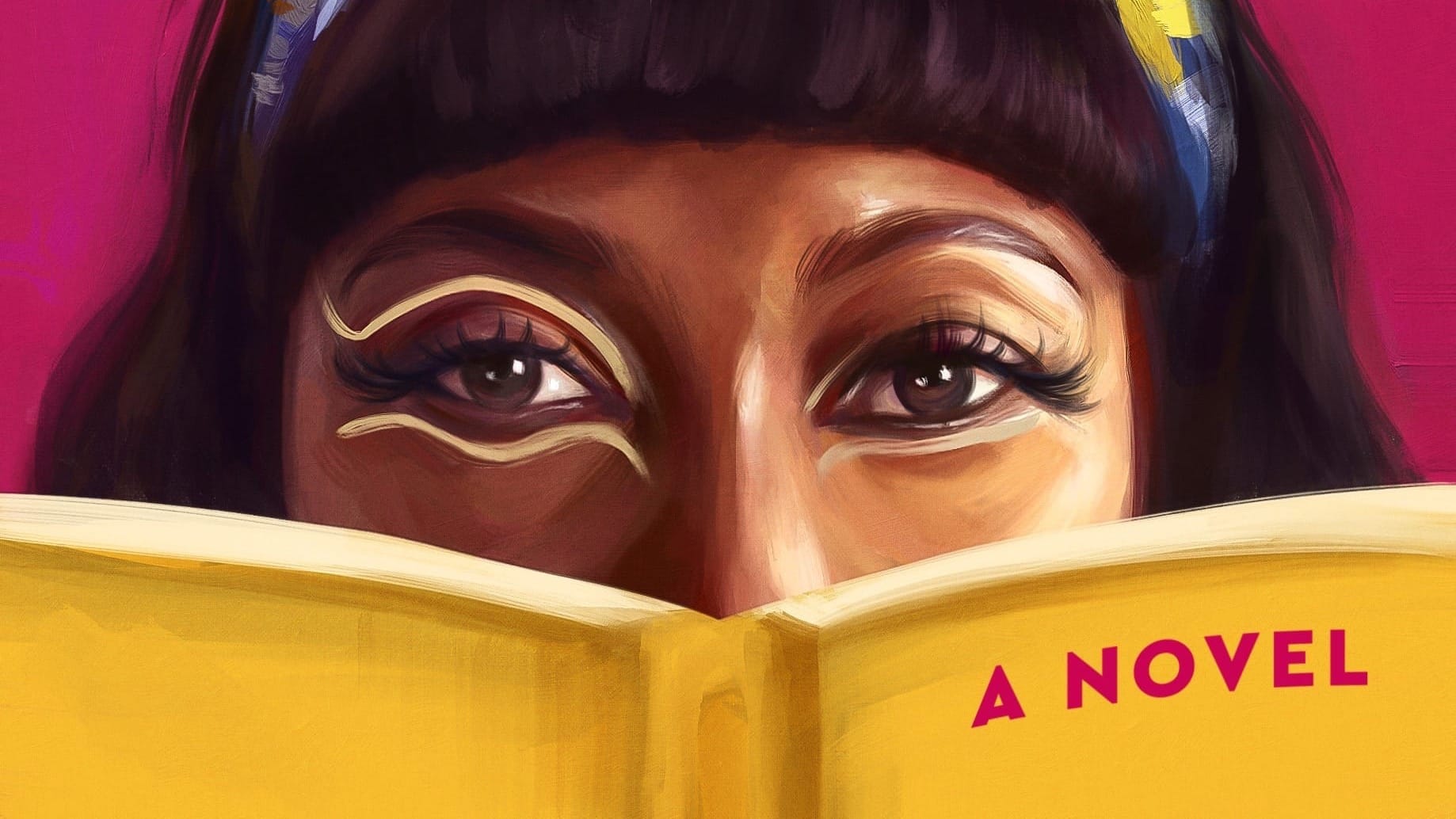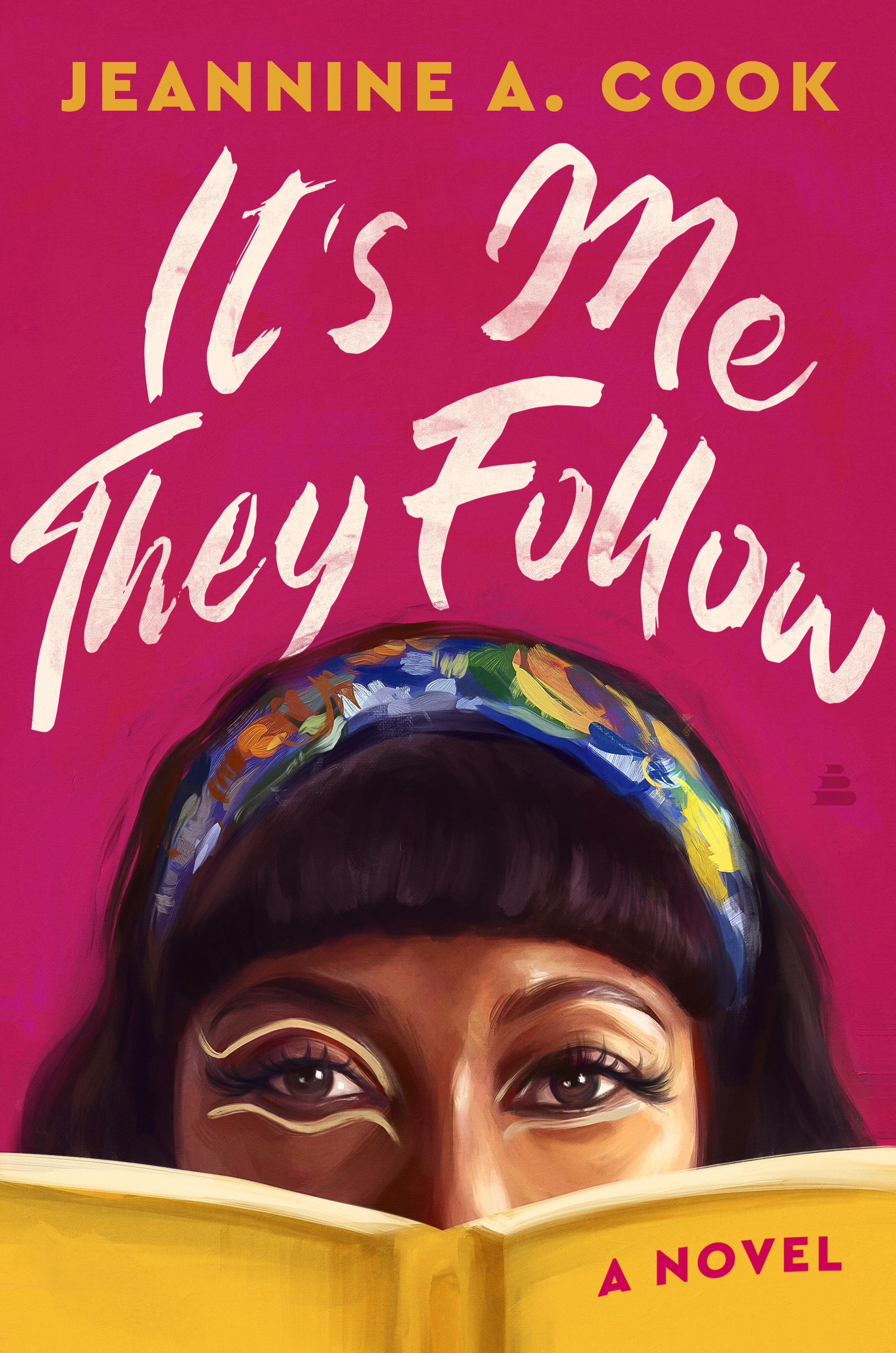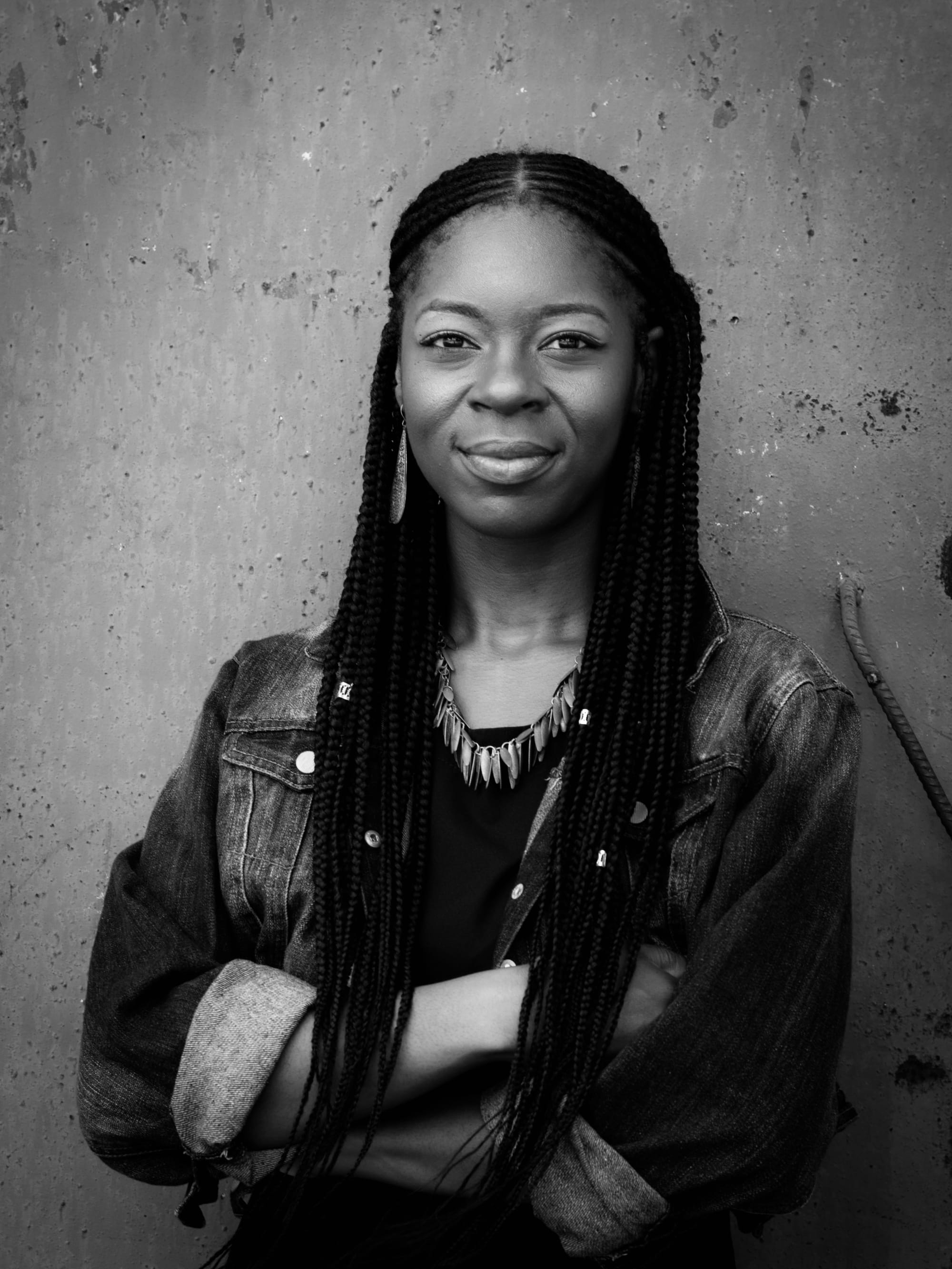Angel Edwards: Mapping Freedom Through Movement and Poetics

For Angel Edwards, even the smallest gesture can feel like a revolution. A hand pressed to the chest, a body at rest, a breath stretched beyond its usual rhythm, these moments are invitations, not performances. They’re acts of care, a reminder that presence itself can be radical.
Poet and cultural leader Yolanda Wisher calls Edwards’ work “profoundly vulnerable, sensual, and liberatory.” She adds: “Angel’s generosity of spirit creates openings for others, as human beings and artists. With their work, Angel is mapping a sense of freedom that we all desperately need and need to protect.”
That generosity has made Edwards, a Jamaican-American artist based in Philadelphia, a vital presence in the city’s creative ecosystem. Their practice spans dance, film, poetry, and visual installation, all threaded with a quiet insistence on softness, slowness, and Black queer presence.
“I’m trying to smash up the hardness of the world, to tenderize it,” Edwards says. “Not because tenderness is always good, but because when you soften, you can actually feel. You can cry. You can yell. You can feel the person next to you, so you can do better.”
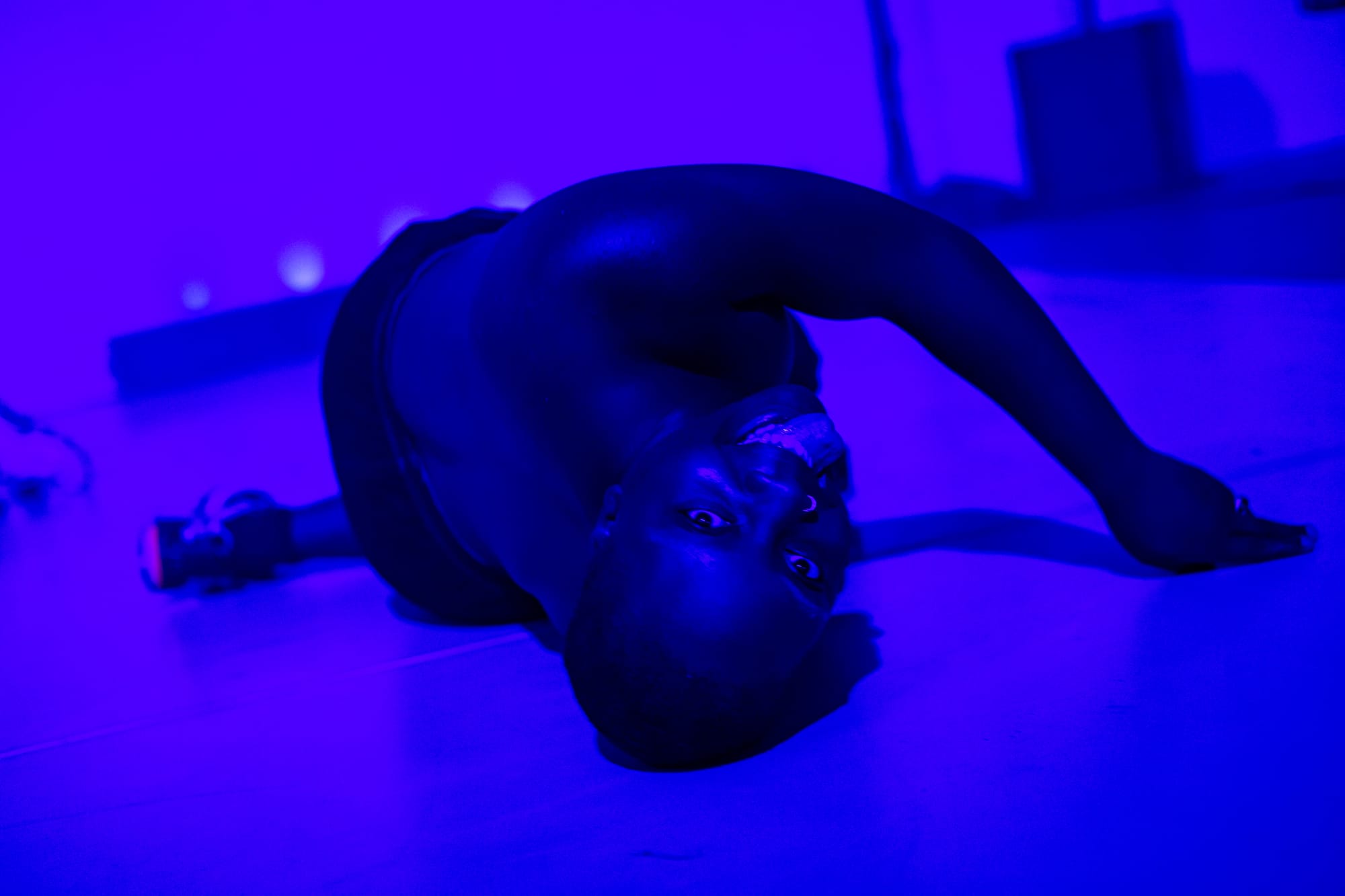
In tell me what your god looks like, Edwards moves as if in conversation with something unseen, a presence hovering just beyond the light. Their body becomes a question, folding and unfurling through slow-motion devotion. Reggae basslines pulse underfoot while gospel hums at the edges like an ancestral chorus; projections ripple across their skin in constellations, turning the stage into a shifting multiverse.
Sometimes they gesture upward, palms open as if offering doubt itself to the heavens. Other times, they crouch low and whisper into the floor, inviting the audience to do the same, to “whisper your testimonies or unknown god,” as they put it. They dance not to define God but to trouble the borders around belief: a ritual of unlearning. Watching them, you feel the sensation of faith being stretched and re-shaped, a choreography of yearning, of questioning, of being held. It is worship with no doctrine, reverence with no rules. In their world, all is welcome: the doubt, the ache, the hope, even the holy.
Edwards’ artistic journey didn’t start in traditional studios. “I didn’t have ballet, jazz, tap, that wasn’t my experience,” they recall. “I was in the streets making up dances with my friends, performing at school talent shows, and starting dance teams. My teachers weren’t trying to cage my voice. They invited me to move in my own way.”
That early freedom shaped a philosophy of movement as self-authorship. “I was the dreamer and the architect of my own story,” Edwards says. “Even if I didn’t know what I was feeling, you were going to feel it too.”
Angel Edwards in "tell me what your god looks like". Credit: Angel Edwards
At Temple University, Edwards was rejected twice from the dance program. Rather than quit, they pursued African American Studies, immersing themselves in Black feminist theory while continuing to choreograph and perform. “I was learning about Blackness as a structure and a framework while dancing my heart away,” they say. “Those worlds started to come together.”
That intersection of scholarship and performance opened the door to experimental film and poetry. Their first short film, THIS IS FOR US, celebrated Black queer kinship through intimate imagery and movement, establishing Edwards as a bold new voice in Philly’s arts scene. Poetry soon followed. “It was terrifying to read my first poem out loud,” they admit. “But I thought, oh my god, I have to keep writing.”
Today, their practice is intentionally porous: braiding, sewing, collage, performance installation, and film all feed one another. “Everything is material,” Edwards says. “The practices speak to each other.”
What gives Edwards’ work its quiet force is the tension it holds between the sacred and the self-built. They are an artist dismantling and rebuilding in real time, unmaking what was inherited, reshaping it with their own hands. Their transness isn’t something the work explains or performs; it’s the architecture beneath it, the lens through which transformation itself becomes holy.
“I’ve always been in the practice of re-making,” Edwards says. “The body keeps changing, the work keeps changing, that’s the faith practice.”
Their choreography often moves between collapse and rebuilding: knees bending toward the floor, the body folding inward before expanding again, as if testing how much it can hold. There’s a tension between softness and survival, vulnerability and power. Watching them, you feel that pull in your own body, the ache of holding multiple selves, the release of letting one go.
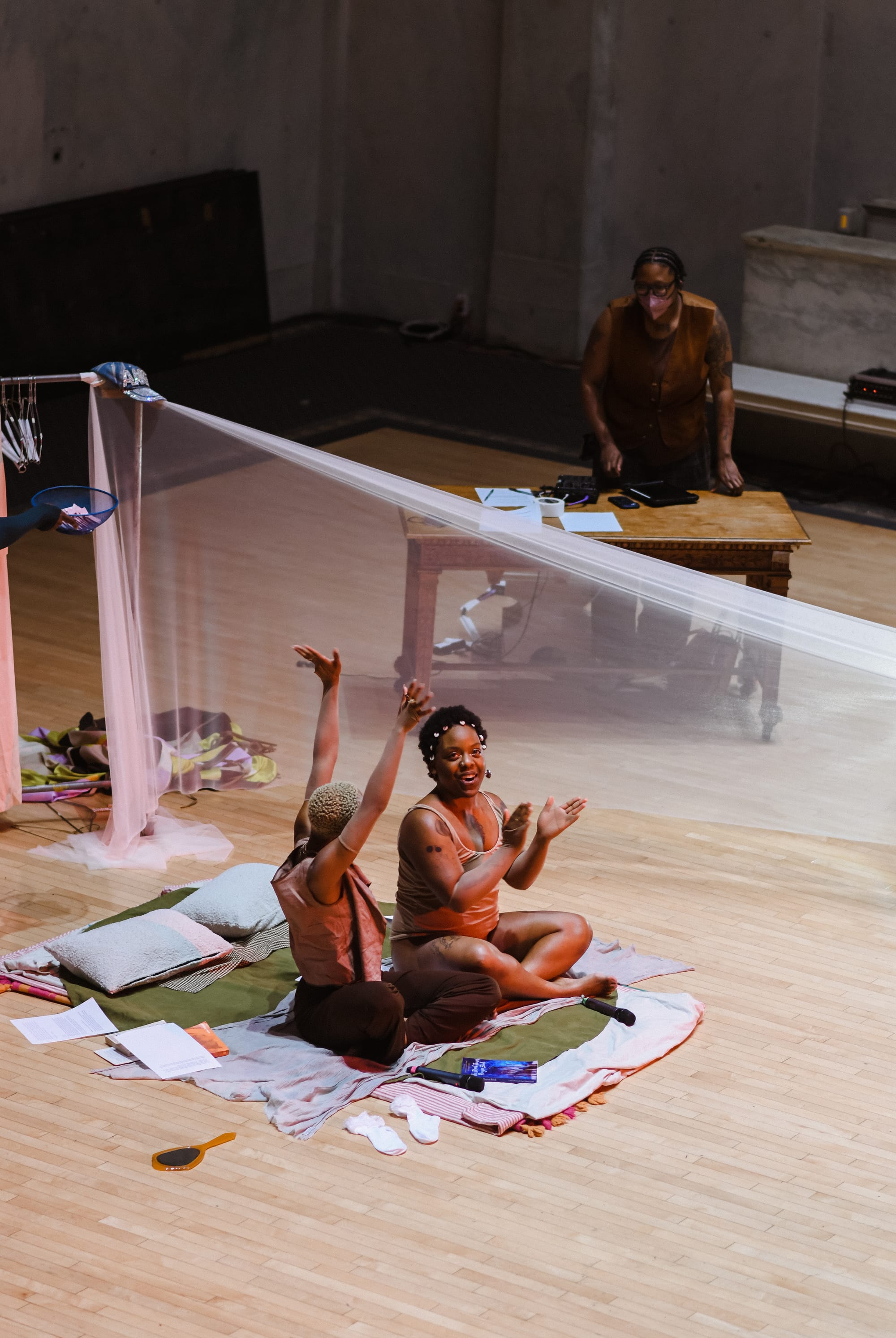
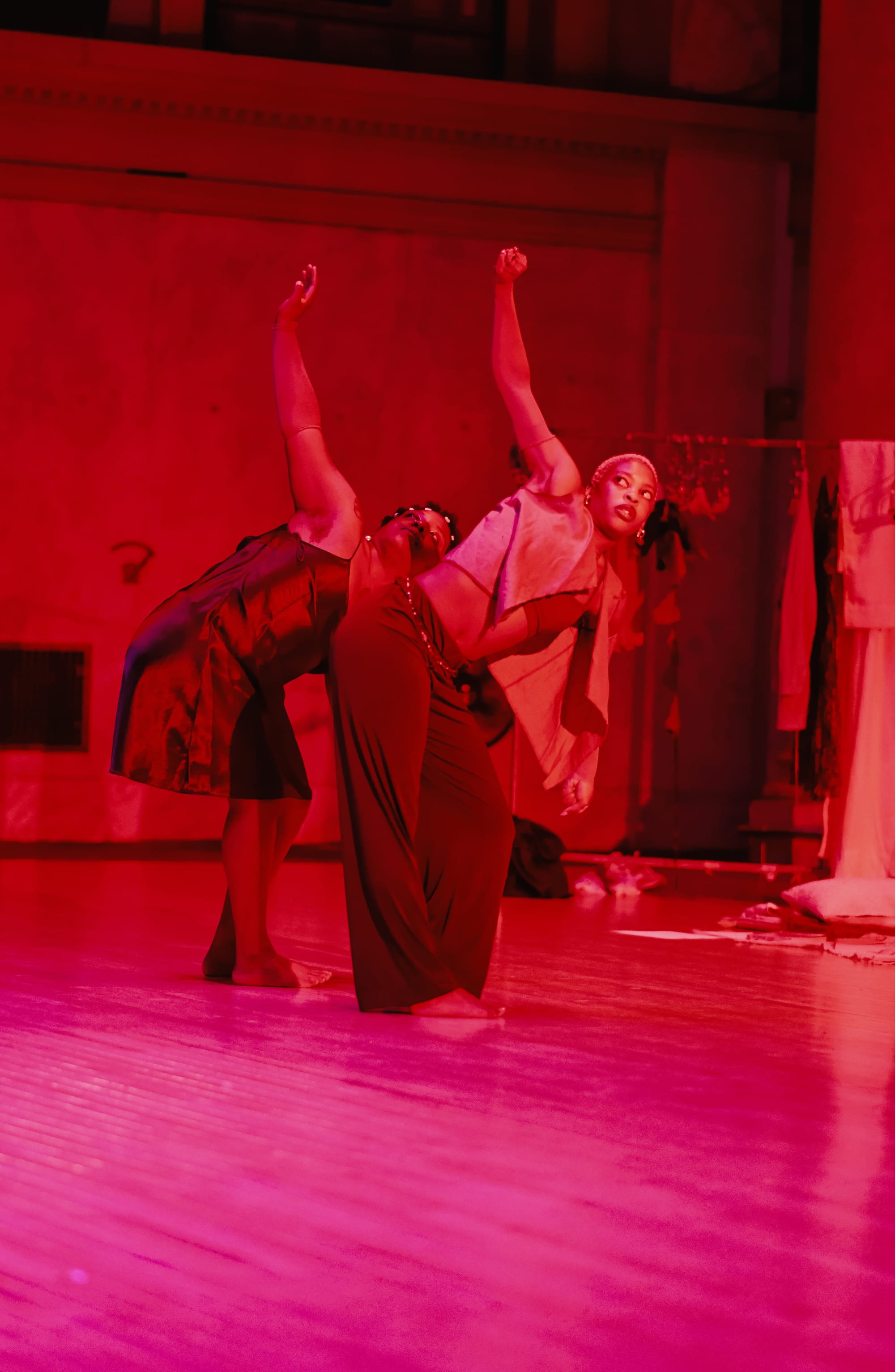
Angel Edwards and Song Aziza performing “tell me what your god look like," at Judson Memorial Church in New York in 2024. Credit: Emily Farthing
For Edwards, queerness is not only about who they are, but how they make: nonlinear, intuitive, porous.
“I think queerness is the way I move through uncertainty,” they say. “It’s not a fixed position, it’s how I stay open, how I refuse to harden.”
That refusal animates everything they create. Where the world demands certainty, their work insists on fluidity. Where the world asks for definition, they offer devotion.
Nicole Pollard, program officer at the Leeway Foundation, which has supported Edwards’ work since 2018, sees interdisciplinarity as part of their power: “Angel is deeply rooted in community, and their art can’t exist without those relationships. In order to be an artist working this way, you have to be intentional about care, for yourself and others. That’s very evident in Angel’s practice.”
Pollard recalls that Edwards’ earliest Leeway grant supported THIS IS FOR US, and since then, they’ve continually deepened their artistry, including training in Barbados on Caribbean contemporary dance and performance. “They’re constantly pushing themselves,” Pollard says. “It’s been incredible to see their growth and recognition.”
For fellow choreographer and installation artist Arien Wilkerson, Angel’s work resonates in part because of what it refuses. “With Angel, there’s a subtlety and a humanness,” they say. “I’m loud and layered in my own practice, but Angel is doing something very particular, very different. It’s real feeling, not spectacle.”
Wilkerson recalls a holiday gathering when they fell asleep after hours of cooking. Angel quietly told everyone not to wake them. “That moment made their practice make the most sense to me,” Wilkerson says. “It showed me that not everyone has to participate in the same way; rest itself was part of the art.”
That ethic of care extends into the tactile dimensions of Edwards’ practice, everyday gestures often dismissed as domestic or mundane. “There’s a softness and a tactility,” Wilkerson notes. “Like getting your hair braided. That regularity, that domestic quality, is beautiful.”
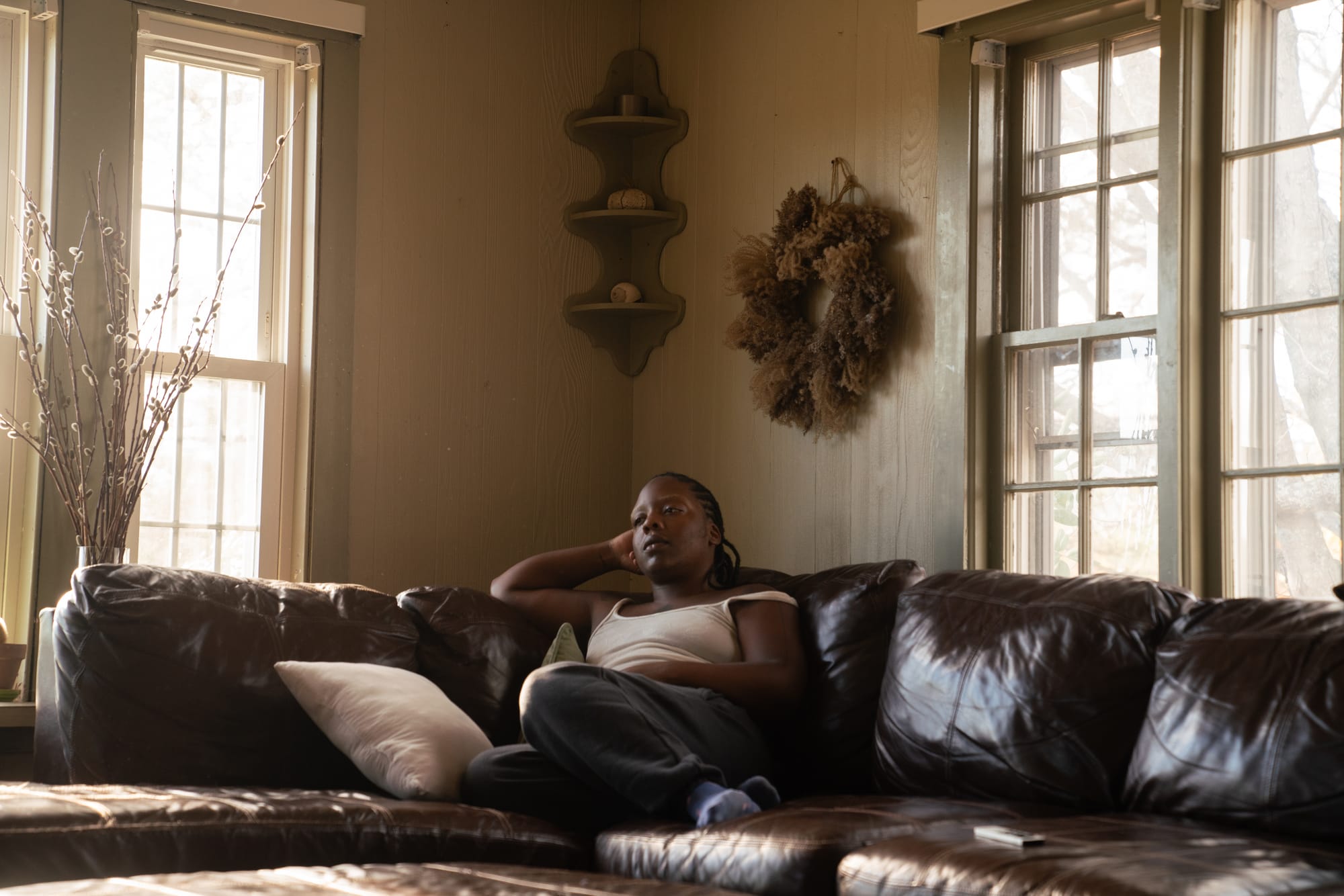
Both Wisher and Pollard emphasize Edwards’ role as a collaborator and community-builder. “Angel builds authentic and lasting bonds with their collaborators,” Wisher says. “They bring curiosity and compassion to their work, and that’s deeply inspiring to other artists.”
Those bonds run through every project. Edwards’ recent Media Artist & Activist Residency with Black Spatial Relics centers Black youth voices, capturing video portraits of young people “in acts of leisure and play,” as Pollard describes, and projecting them publicly across Philadelphia. “Angel’s intention is about making space for Black youth to take up space in their own city,” she says. “It’s a response to curfews, lack of resources, and a culture that doesn’t always value their presence. This project reclaims that space.”
Philadelphia itself, its vibrancy, textures, and contradictions, is central to Edwards’ vision. “Philly has taught me that I need community to do this work,” Edwards says. “There’s a romance here people don’t always get. Philly is a place where you can dabble, fail, mess up, and still be welcomed back to try again.”
“I want people to sit,” Edwards says simply. “Sit and look. Go somewhere in your head. Wander. Lay your burdens down.”
For Wilkerson, that authenticity is what makes Edwards’ practice singular. “Angel doesn’t make art just to make art, they make it when they have something sacred to give,” they say. “What excites me most is that whatever they do next will be real and intentional.”
That sense of possibility runs through every choice Edwards makes, whether they’re braiding hair, writing a poem, or capturing a fleeting moment on film. Their practice is both tender and unflinching, rooted in relationships yet expansive enough to imagine new ways of being. To witness their work is to be invited into that vision, a slower, softer world where care is not a luxury but a way of surviving together.
